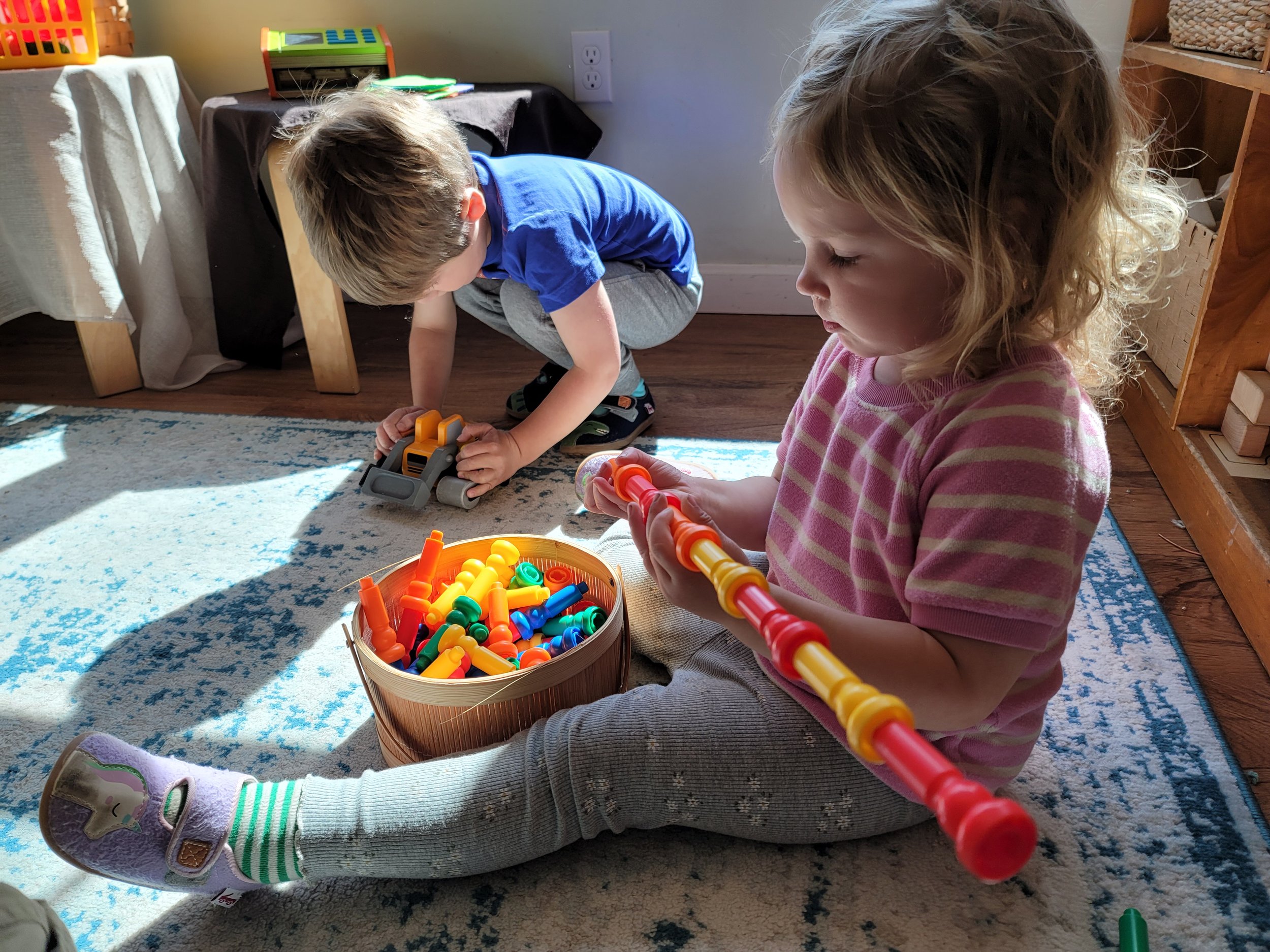SET YOUR CHILD UP FOR SUCCESS
BY SETTING THE STAGE FOR INDEPENDENT PLAY
Childhood offers endless play opportunities, and at Harmony—surprise, surprise—we wholeheartedly embrace independent play’s vital role in healthy child development. It’s central to our philosophy, and a core pillar of Harmony's Magic Formula. Today, we’re taking you on a deep dive into why it’s vital to your child, and to you.
As parents, we always want the best for our children. They begin their lives in a state of physical helplessness, and we quickly grow accustomed to doing absolutely everything to support them. Of course, every day, they need us just a little bit less, and though we understand that cognitively, it can be hard to let go of our well-intentioned helpfulness as they transition through infancy and toddlerhood to the preschool years. We may find ourselves mechanically completing tasks and solving problems our children are now equipped to solve, with our children expecting our presence in all moments, for all tasks. Whew—we’re exhausted just thinking about that! The time we spend with and devoted to our children is undeniably precious and critically important, but there’s no doubt we parents need some space from our children to be our best selves. The best news? So do our children…
Young children inherently seek independence.
As much as they adore and cling to us, they are born with the curiosity, wonder, and enthusiasm to explore and spark their own learning. The more we can encourage this self-directed exploration, the better off we all are. One of the earliest ways this manifests is through play.
A child playing alone initiates new experiences which naturally lead to original thought, ingenuity, self-discovery, and a growing understanding of the surrounding world.
Connecting and positioning blocks, enclosing a matchbox car within a magnetic tile structure, rotating a turntable with a figurine on top and observing its trajectory, running a hand through a sensory bin filled with ribbons of varying textures…young minds are constantly absorbing, processing, and strategizing.
We are far from the first to recognize this. Over 100 years ago, Swiss psychologist Jean Piaget began studies concluding that children are truly active learners—little scientists continually observing and building on prior learning. In the 1970s, early childhood educator Magda Gerber taught parents to respect their children and trust that they are highly capable.
To support your children’s self-led journey of discovery at home and set the stage for independent play, follow these three simple steps:
HOW TO FOSTER INDEPENDENT PLAY
1. Set Out Simple Play Materials
In an area free of distracting clutter, strategically leave out simple, open-ended play materials for your child. (Building blocks partially constructed, a puzzle with a piece or two in place, a basket filled with curtain swatches…or any number of items suggested in our post, Learning Through Play: Less Is More.)
2. Give Your Child Space
If you can, resist the urge to comment on what you see. Let your child make all the discoveries—silently within his mind and as he physically begins to manipulate the materials before him. Observe, at a distance as he works his own joyous, cognitive magic, learning and discovering autonomy through play.
3 Observe Quietly TO ALLOW Maximum Discovery
Every parent is a teacher, even when we’re not trying to be. When your child requests assistance or asks you a question sparked by play, try to meet it with another open-ended question continuing the chain nurturing curiosity. “I wonder... What else could you do?… Why did you try?...” Through these quiet moments observing and connecting with our children, we can share our own gentle insights, experiences, wonder, and encouragement.
If your child is reluctant to engage in independent play, patiently encourage independence through sensitive, incremental steps. When asked to join her play, sit beside her activity, but aim to remain an observer. Stay fully attentive and responsive, yet stop short of offering suggestions or direction. As she gets more deeply engaged in play, quietly move back and away. Begin to establish short, reasonable, understandable boundaries, and extend time as your child adapts. “I’ll be at my desk… I’ll be back in 5 minutes…” Return as promised, and your little one will trust you to follow through with your word. Through these steps, you’re helping your children become strong, confident, self-driven individuals, while creating moments of reprieve for yourself.
Over time, you will likely notice your child engaging in more, extended sessions of independent play. Treasure and guard it. At Harmony, we go to great lengths to prevent other children interrupting a child lost in individual immersive play—though we can’t always see exactly what is being gleaned, these are often the moments of the deepest, self-directed learning. Allowing your children the space to summit the challenges within their independent play today develops the determination, focus, patience, and problem-solving skills for their academic and life habits forevermore.
________________________________________________________________________
We’d love to see any Harmony-inspired moments you capture along your child’s early years journey. Tag us (@HarmonyNLC) on Facebook and Instagram, and use the hashtags #HarmonyNaturalLearningCenter #TheHarmonyApproach #HarmonyNLC
______________________________
Interested in introducing more of The Harmony Approach to your preschooler at home? Check out Harmony at Home (FREE activities available).
















